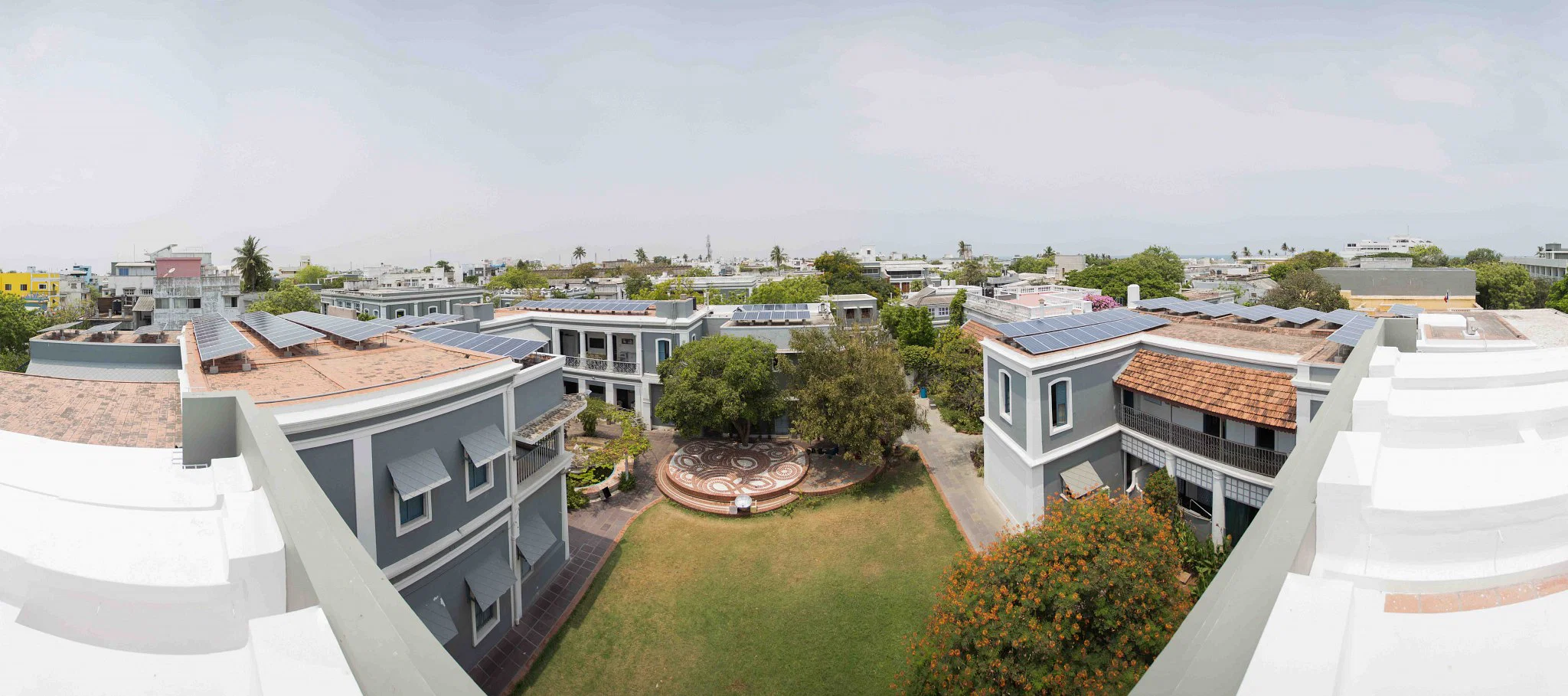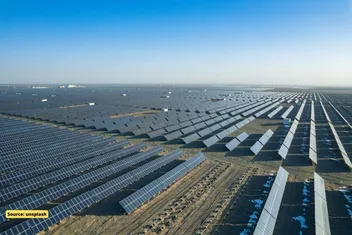WHICH IS THE FIRST FULLY SOLAR-POWERED EDUCATIONAL INSTITUTE IN INDIA?

The Sri Aurobindo International Centre for Education in Puducherry is the first fully solar-powered educational institute in India. With solar panels installed on almost all the rooftops in the campus, the school produces three times more energy than what it consumes.
Many schools encourage their students to switch off the fans and lights after use, plant trees and take other initiatives to save energy. However, very few go beyond just asking them to take precautions and save energy. SAICE is different. This educational institute is self-reliant in terms of energy; it meets all its energy requirements through solar power. Moreover, it produces three times the electricity it consumes and lights up many other buildings with the excess energy. And it has done so by devising and implementing a project almost entirely on its own.
SAICE is a part of the Sri Aurobindo Ashram in Pondicherry. It was in 2012 that Dr. Brahmanand Mohanty, an alumnus of SAICE, came up with the idea of making the ashram energy efficient with the help of a sustainable model.
Dr. Mohanty had a vision of developing a system that would make SAICE self-dependent for energy. With this in mind, he had a meeting with the trustees of the Ashram. They gave him the go ahead and even suggested that pilot research activities should be taken up with the active participation of the young teachers and students at the Institute. And then it all began. The whole project was conducted in two phases from 2012 to 2015.
Following this analysis, all inefficient lamps, fans, air conditioners, and computers, which had been in use since a long period of time, were substituted by more energy-efficient alternatives to lower the energy demand by more than 25 percent, without compromising on the quality and service.
With a better understanding of how much energy the educational institute was consuming, they came to the decision that a solar power plant should be installed inside the campus so as to meet all the energy demands in-house. Thus, a 17 kWp rooftop solar power plant was set up in the school by an Auroville-based solar installer.Teachers and students were involved in the entire process right from the start. They helped in the basic wiring, setting up the panels on the rooftop, and more.
Credit : The better india
Picture Credit : Google
